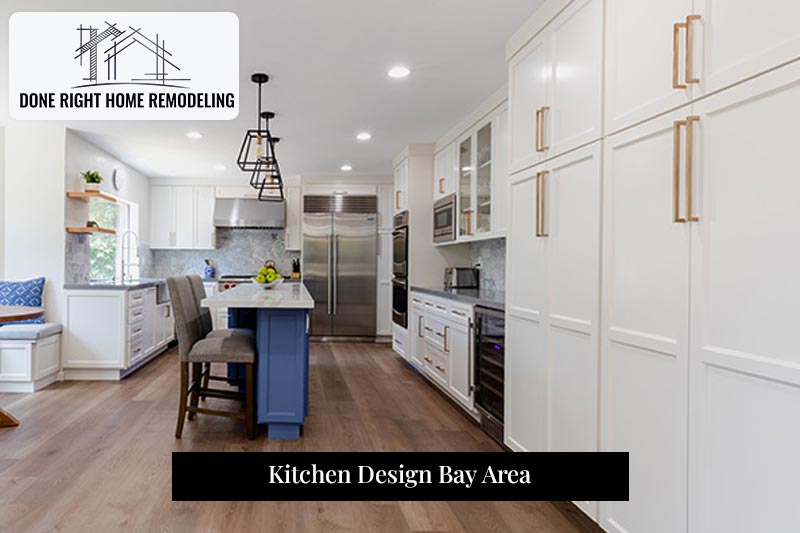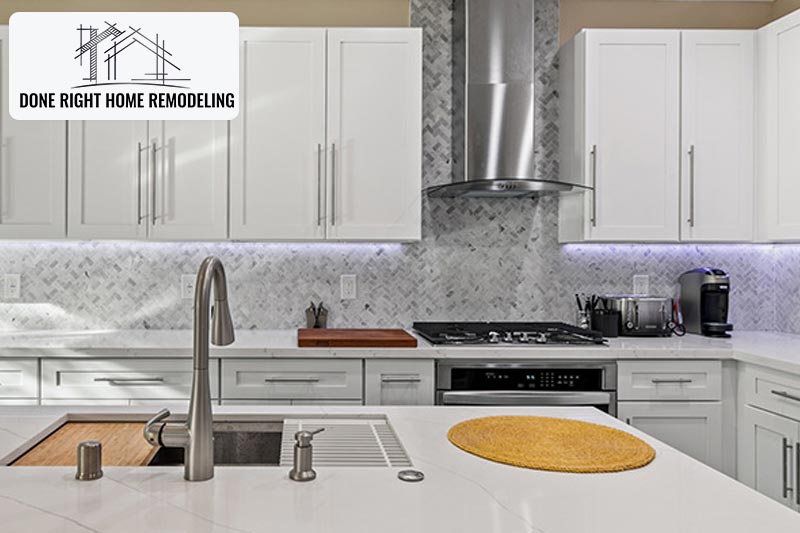LIC #: 1002689
When planning a new kitchen design Bay Area, it’s essential to consider the requirements of everyone using it. For family homes, this means having an adaptable space that can meet your needs and those of your children, both when they are young and as they reach their teens.

This is just as important for anyone planning a kitchen design Bay Area and hoping to have children in the future.
A kitchen is not just a place to cook and eat; it is also a social space to gather, do homework and spend time together as a family. So with that in mind, here are some design suggestions to help create your ideal family kitchen.
Getting the design right is essential for any kitchen, but your best possible method depends on whether you have (or intend to have) children.
The ideal design also depends on the type of environment you want for your kitchen. For example, if you are interested in a child-free zone, a U-shaped peninsula or kitchen that closes off access at one end is ideal.
It will keep family members out of the area and off your feet. Also, in a busy home, it can be safer to cook.
If you prefer a bustling, family-focused space, your best bet is an open-plan layout with an L-shaped or island design that flows into a living room. This distribution allows the family to freely access the kitchen, creating a cozy atmosphere.
Many families prefer an open and sociable kitchen. If so, your designer must know this, along with details like the number of people in your home, the children’s age, your family’s preferred cooking styles, and who usually cooks. This information will help them plan a safe and comfortable work environment that suits everyone.
For example, if you want teens to access the refrigerator or microwave, place these items on the outskirts of the kitchen, where they are easy to reach but away from the cooking area.
Similarly, a kitchen island with seating at the far end will allow you to keep an eye on small children while you cook but will also safely separate them from the hazards of the food preparation and cooking area.
Shaker-style cabinets can easily be termed the best and the clean and classic lines are surely a key reason. It comes in a variety of materials & colors and can complement any interior kitchen design style.
Here are some improvements, you can execute to enhance safety features in the kitchen area.
|
A Ventilation Upgrade |
It is essential to maintain proper ventilation in the kitchen. The lack of it can create polluted and strenuous working conditions for the cook. The space can become hot & smoky and strenuous for the cook. It could lead to chronic breathing problems and heart-related diseases. |
|
Non-Slip Flooring |
This space is bound to suffer from spills of water and food. Hence, you can always think of installing non-slip flooring to enhance safety in the kitchen. The floor material in the kitchen could be anything from ceramic & porcelain or vinyl. |
|
Ensure Fire Safety |
This is one more thing to keep in mind as you explore ways to enhance safety in the kitchen. You can think of installing smoke detector alarms or fire suppression systems. |
If you have room for an island, think about how you want to use it. An island with seating, for example, makes the kitchen more versatile. It becomes a place to eat, study, do homework or for parents to have a glass of wine once the children have gone to bed.
An induction cooktop on the island makes it more social and allows children to watch and learn while parents cook.
In a food preparation area, it’s best to choose a work surface at the height that best suits the person who does the cooking most of the time, but it’s also worth including work surfaces at different sizes.
For example, an island counter would be too low to fit a baby high chair under it, while a breakfast bar might be the perfect height. A breakfast bar could also accommodate older children on stools and be used for homework.
If there is space, an adjoining portion of the island could also be on a lower level to accommodate a more formal family dining room.
Safety is paramount in a family kitchen, and extra caution should be exercised when there are small children and electrical appliances.
Some types of appliances are safer than others. For example, induction cooktops are ideal for families because, unlike gas cooktops, there is no flame, and the surface stays cool during cooking. They also have essential security locks.
Opt for appliances that are designed for comfort and ease the pressures of family life. For example, choose a dishwasher that heats to 90 degrees, thus eliminating the need for a separate bottle sterilizer.
Similarly, opt for a boiling water tap and rapid cook oven to save time. Also, an induction hob cooks much faster than a gas hob.
Young children often struggle with sticky handprints. So opt for surfaces and finishes that are less likely to stain.
Fingerprints are less visible on a matte surface than on a glossy one and even less on a stone or textured wood door. So keep this in mind when choosing door and drawer fronts.
Regarding countertops, look for materials like Corian or quartz, which are stain resistant and durable (but can also be repaired if they break).
Silestone, on the other hand, is non-porous and antimicrobial, making it a favorite choice among parents of young children.
Storage is crucial in a family kitchen, where you have to find a place for items related to children, such as bottles, sterilizers, baby food, and other kitchen utensils.
As your family grows, you’ll also need more food storage, especially if children start to develop a preference for a greater variety of foods.
Plan your storage so that anything dangerous, like knives, is locked up. Similarly, you should store fragile items like glassware and delicate china high up and out of reach.

Make sure your kitchen is a fun area for your family to hang out. Include informal seating areas, such as an adjoining breakfast bar or a picnic bench, to encourage people to stay.
Add some bold accessories for bright pops of color, or try a chalkboard wall, which is helpful for shopping lists, reminders, or for kids to practice their spelling. It might even keep them busy while you prepare dinner.
If your current kitchen design has disorganized, we at Done Right Home Remodeling as kitchen designer in Bay Area would be happy to discuss the possibilities with you. So schedule a call and our team will contact you shortly.
Be clear about the style you want for this space. It could be contemporary & traditional or transitional.
The kitchen design should blend with the architecture of your home.
Select a color theme for the cooking zone.
Right at the start you must decide on a layout for your kitchen that can set the tone. You can now think about style additions for this space.
The U-shaped or island layouts offer ample space for the cook to operate. These layouts offer abundant food preparation areas.
The countertop is the focal point in a kitchen. It will attract the attention of anyone who enters this space and these are the upgrades that enhance the resale value of your home.